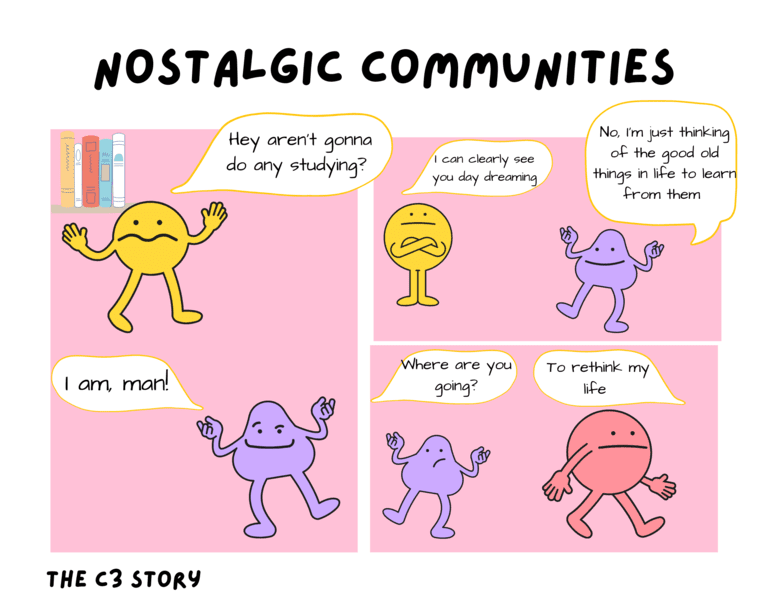Community and cold coffee🥤😎| S2 EP- 2 Nostalgic communities

Isn’t it always a joy to look back at things that inspired us. To go down memory lane and feel like it’s happening right now. This week’s C3 was all about experiencing that warmth and at the same time bringing back hacks that can be super handy for the process of building communities today. And especially when it comes to communities, all community-loving people will have a community that they look up to like Harley Davidson, Sephora, Lego, and more. We took a chance to explore our favorite communities during this session.
Here is what we discussed: “Favourite communities, best practices, bad practices, ROI, value, philosophy, etc.”
Our favorite Community stories that stay in our hearts
Nishkarsh - (OnePlus community) This community is shaped in a way that it feels like it is for all, a 360° platform. With successful efforts in areas of member engagement, a well-knit student ambassador program, offers and incentives have played a very great deal in making the community a great success.
Chetan - Communities that are shaped in a way that expresses a feeling of camaraderie are commendable. Such communities make members feel belonged and encourage them to come forward and help each other without expecting anything in return. This practice of building relationships is what makes successful communities.
Vasishta - (Bangalore startups) A community that grew and helped its members grow together along with it over the years. Members just wanted to help each other. It was a place where young founders got help and guidance in their journey of building their community. A place where people can rely on and find it like home is a type of community we can always look up to.
Varu - A health platform that was built for people who were fighting cancer helped a woman who was broken and devastated. The community made her realize that she was not alone, this support was enough to give her the strength to fight a life-threatening disease and find victory in it. A community is not just a place to find people and converse, it serves as a place to impact people, an impact that is life-changing.
Lesson learned and admired
We all grew up admiring few communities or the effect of local chapters or communities for the very essence of people and rituals associated with those people and culture. Here is a list of takeaways we all took along with us.
Being Proactive - A proactive community equals a healthy community atmosphere. No one has to wait for the respective brand person to come help, but people around just come forward to give a helping hand. Such communities make life easier and help build a connection with the community and the brand incessantly.
Purely community-driven - Vasishta brought to light the way Notion grew purely because of its community. They did not raise funds, did not have a marketing team, did not run ads, did not have a growth team but relied only on the community to grow in the product space. And that one decision was a wise decision no one can deny. The journey turned out as an example for both the brand and the community to grow together tremendously.
Collective intelligence - A community happens to be a warehouse of knowledge that cannot be achieved by a single man. Brands who understand this choose a community.
Listen to members - There is a saying “ money does wonders”, but sorry we believe in something more legit “people do wonders”. People who believe in the second saying are the ones who tend to build a community to listen to people and make discussions. And this plan always succeeds. Because in the end, people are the super users of the brand.
Nurture a sense of belonging - When there’s the presence of belonging there is an absence of artificial push for engagement. People here love to help others so they come forward without a hard push or an external trigger. This nature is nurtured when the community is not only a place where conversations happen but is a place that makes the members feel that they are building something bigger together.
Chetan says “It doesn’t matter how many features you launch or how cool your product is if you don’t build a sense of belonging. Your sustainability becomes questionable.” The sense of accomplishment that makes members feel “I have contributed” is what matters.
HOG( Harley Davidson Owners Group) This is an outstanding community that started a community for the owners of the Harley Davidson community. This community took a neat process and built a community that built a strong pact of loyal Harley Davidson lovers. Looking at such a community gives out a ton of lessons a community builder should know. Have a look at the whole stunning process of HOG community, and how they built a community
The ROI of a community
Why will we not discuss ROI when we discuss our favorite communities?
Member retention and growth - A community is rich because of its content. It is a known truth that there is always only 1% of the entire community who happen to be the content contributors. A community that identifies these contributors and encourages them produces valuable content that makes people come back and stick to the community. The practice of retaining the members is an ROI for the brand cause with this they will be able to build a loyal pack for the brand with the community.
Impact and value creation - ROI is not always in a direct dollar form when it comes to a community like in a business perspective. Here the investment is in the form of creating impacts and the return of such investment is got back as member growth or retention. A community enhances the sales process indirectly and helps in ROI.
Post-sales relationship - The pre-sales process is well oiled in all brands but the post-sales relationship is what fuels retention and loyalty. This space allows the brands to listen to the stories of their customers and know how they use the products. This knowledge will help build better products that will benefit and be loved by the customers. This, in the end, results in a repetitive sales cycle and that is an ROI we can take into account.
A living community example to show community helps in ROI- The LEGO community, this brand could have gone bankrupt if not for a community coming to the rescue. They knew that their customers have a value that might come in handy for their growth and streamlined and organized those values for their own good. Making it a win-win situation for both them and their customers. They invested in people and the result is what we see today. ROI has a different form when it comes to community and this was pretty evident in the LEGO community.
What scares brands to have a community?
FONI (Fear Of Negative Image)- A brand’s first and foremost fear is, what if people start posting negative stuff about the product or the brand? Will the image of the brand be damaged?
Will social media kill their social image? With this fear, they move away from creating a cohesive space for their end-users who would eventually turn into champions, advocates, etc.
How to come out of FONI?
Understand that negative feedback doesn’t break the brand but builds the brand better.
Help find the source of the crisis - No brand can make a cent percent perfect product, all products have their flaws and are disliked by a proportionate percentage of customers. But unless a brand comes to know the source of negative feedback, the absence of giving a simple resolution or listening to a customer would end up tarnishing the brand's image. It gives brands leverage to avert a potential crisis that could cost them their reputation and customers.
A good response will garner a positive brand image - Social media and other forums not only feature the negative comments but will also picture the way you respond to the issue. If the brand shows genuine concern to the customer and solves the issue, people who keep watching will want to associate with your brand.
Help you know customer’s needs - All brands’ core aim is to cater to their customer’s needs. And a community is a place where the brand can meet its customers and know their needs and then build a product. When this process is in place there is no way the brand can go wrong in making the best product that a customer needs.
These advantages of a community make a great deal of positive impact on its customers and increase brand loyalty, brand image, brand awareness, and sales. If brands still think a community can go wrong for them, we feel sorry for them.
Stories like these make us learn and get inspired and create stories of our own, we are a bunch of people who have tasted such communities and want to build communities that are seasoned in a way that it impacts. This week’s C3 was truly a time to look back at communities that have run the race well and served as a time of realization to understand what makes the best community.


 Habitate
Habitate